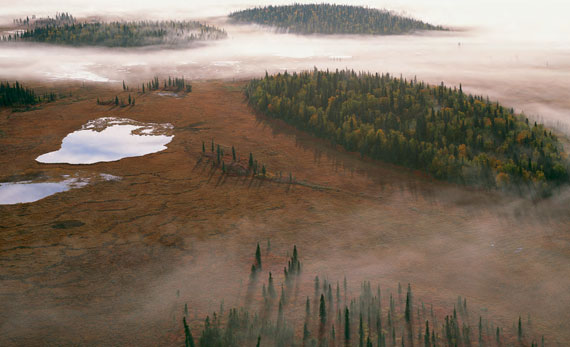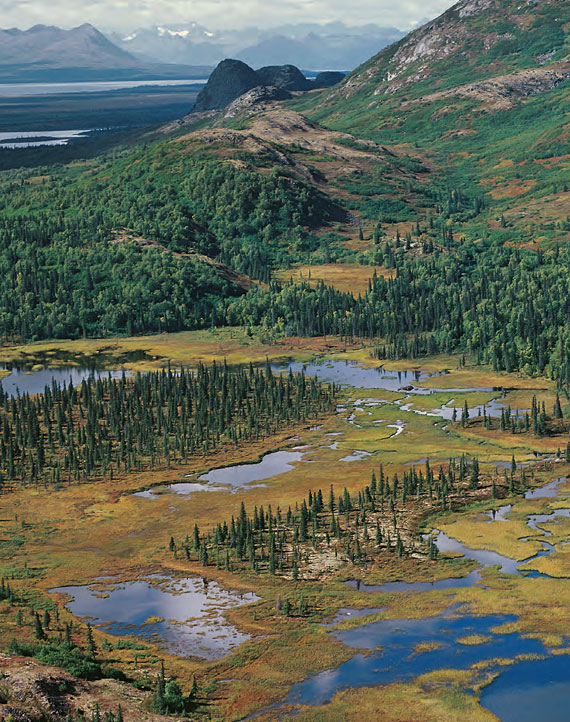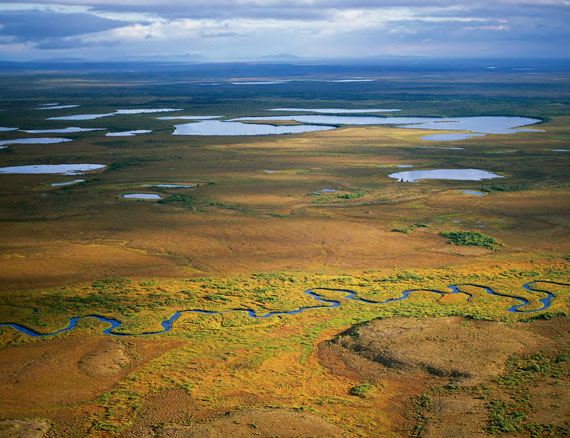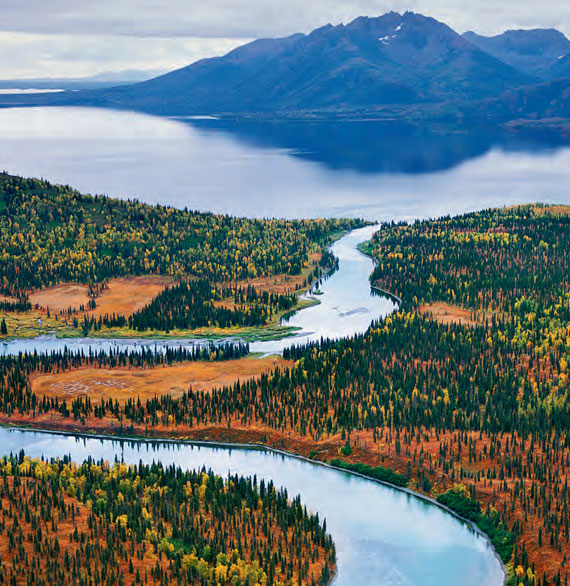Inalienable Rights: What About the Land?
When I wrote the book, The Tongass: Alaska’s Vanishing Rain Forest, one of the chapters asked the question “Do trees have standing?” In other words, do they have legal rights – rights perhaps earned by their contribution to our existence other than in board feet? Surely their beauty, their age and their ability to adapt must harbor some knowledge with it. The focus of my new work is dedicated to protecting the intact fishery and onshore habitat of Southwest Alaska. And, again, it seems the same questions should be asked about this landscape. As a productive, supportive, bio-dynamic world from which we benefit, should it not have some respect from us and some legal right to exist? Remember Thoreau: “In wildness is the preservation of the world.”

© Robert Glenn Ketchum
“Tree islands” stand above the lake-dotted, lowland tundra of Southwest Alaska. The saturated, water-rich habitat is great for fish but problematic if developed as one of the largest open-pit copper and cyanide gold-leach mines in the world. The proposed Pebble Mine complex would threaten the air quality of surrounding national parks and wild lands, introduce cyanide into the fishery and use more electricity in a single day than the entire city of Anchorage.

© Robert Glenn Ketchum
Southwest Alaska is the habitat of the Bristol Bay fisheries, the most productive commercial wild salmon fishery in the world’s history a well managed $1 billion per year renewable industry. Southwest is also the home of two national parks, Katmai National Park and Lake Clark National Park, three national wildlife refuges and four state designated areas, one of which is Wood Tikchik, Alaska’s largest state park.

© Robert Glenn Ketchum
Southwest Alaska, roughly the size of Washington State, has only two small cities and some thirty smaller villages. Roads and human disruption are minimal. Fed by snowmelt from the Alaska Range, the Wood Mountains and the spectacular glacial lake system of Wood Tikchik State Park, Southwest is one of North America’s most biologically diverse freshwater systems, supporting huge populations of all five species of Pacific salmon, Arctic char, Dolly Varden and some of the largest rainbow trout in recreational fishing.

© Robert Glenn Ketchum
Fish and the sizable habitat sustain healthy populations of bear, eagle, wolf, caribou and goat. Hundreds of thousands of birds migrating along the Pacific Coast also stop over to rest, feed and breed here. Bristol Bay, the marine system into which Southwest Alaska waters flow, hosts a walrus reserve on offshore islands. And, in addition to the vast numbers of salmon that migrate annually through this unspoiled area, it is rich with marine mammals such as whale and orca, crab, herring, many species of rockfish and unique corals.

© Robert Glenn Ketchum
The Bush Administration recently announced that 1.5 million acres of offshore leases are to be made available for oil and gas exploration within Bristol Bay, the heart of the salmon industry. With the onshore Pebble Mine proposal, it is clear that Southwest Alaska is at a crossroads. It remains for the public to judge whether we should trade these sustainable, commercially productive wild systems for short term industrial disruption that could alter those systems forever, or worse, eliminate them altogether.




























